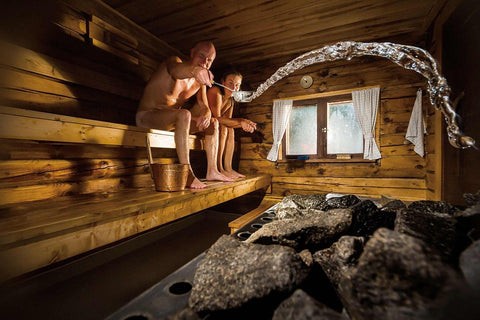Not known Facts About Traditional Sauna
Not known Facts About Traditional Sauna
Blog Article
The 3-Minute Rule for Traditional Sauna
Table of ContentsThe Only Guide to Traditional SaunaLittle Known Facts About Traditional Sauna.The Facts About Traditional Sauna UncoveredThe 4-Minute Rule for Traditional SaunaThe Main Principles Of Traditional Sauna
Many of the weight shed in a sauna is water loss and is re-gained upon rehydrating. Without a question sauna can be a crucial part of a healthy weight loss program. To take a look at the distinctions between typical and IR saunas, I will certainly separate these into proven, academic, and fabricated distinctions.Thus, the best point in the saunawhich is at the ceiling directly above the sauna heateris typically in between 185 and 190 F. Claims that a traditional sauna goes beyond 200 F is just not real and not applicable for electric saunas offered in the US. The temperature level for a far-infrared sauna is generally set in between 120 and 140 F; however, unlike the typical sauna, the goal in and IR room is not to achieve a heat.
As a result of this, the temperature level difference is practically unimportant, given that excessive sweating causes both sauna kinds, but the approach of heating the body is various. In an IR sauna the bather will certainly really feel hot and will sweat a lot, however at a lot lower temperatures (Traditional Sauna). Hence, if the objective is to invest longer amount of times in the sauna, the IR sauna is a good choice
When a conventional sauna has actually been appropriately heated up, the sauna wall surfaces are warm, the air temperature level has attained established temperature and the rocks are incredibly heated. As an interesting side note, the warmed walls and the rocks are emitting far-infrared warmth, incorporated with the warmed air, to produce an "covering heat".
Top Guidelines Of Traditional Sauna

When the high temperature level is attained, the components cycle on and off to maintain the heat. Most traditional sauna users delight in putting water over the rocks to produce steam to elevate sauna moisture degrees. The advantages of putting water over the rocks consist of: making the space a lot more comfortable, moistening the nasal passages, and enabling the use of aromatherapy by mixing essential oils with the water.

When the power gets in the body, it causes the body temperature level to enhance and inevitably causes sweating. In an infrared sauna it is very important for the emitters/heaters to continue to be on nearly continuously. Given that there is no mass of rocks to retain warm, the sauna will certainly cool if the emitters shut down.
As mentioned above, the sauna bather in an infrared space intends to place himself in front of operating emitters to get optimal take advantage of the heat. The heating time for both areas can be extremely various, depending on just how the spaces are used. For a conventional sauna, a bather must allow 30-40 minutes for the area to achieve a preferred temperature and to correctly pre-heat the rocks.
What Does Traditional Sauna Do?
A well constructed sauna will generally accomplish a temperature level of 150-160 F in about 30-40 minutes. For hotter temperature levels, the go to this web-site room might require to warm for a longer duration. Once the space accomplishes set temperature, the heating system will certainly cycle on and off, normally running about 50% of the moment. The protected walls and the warmed rocks will maintain the area hot and at steady temperature levels.

Traditional saunas have a tendency to be larger (hence use even more power) than infrared saunas, although standard saunas are definitely readily available in one and two individual sizes also. For a two-person traditional sauna, 5x6 or 5x7 dimension is most prominent. The top bench can pleasantly seat 2 or three people and is also enough time to relax during the sauna session.
Fascination About Traditional Sauna
The ordinary price per kWH of electrical power in the U.S. is about $0.11, so a 4.5 kW heater will set you back roughly $.50 to compete one hour, if the heating unit runs continually for one hour. Generally a sauna heater will compete 75% of the initial hour and 50% of succeeding hours click here now on because the aspects cycle once the set temperature level is attained.

There is a rarely gone over distinction in the social experience between the 2 spaces. While our culture has lost some of the social benefit of the standard sauna experience, it can be very socially rewarding (Traditional Sauna). From household time in the sauna, to heart-felt discussions with better halves, to sauna partiesthe standard sauna experience can result in intimate mingling
The Best Strategy To Use For Traditional Sauna
The majority of greater end infrared spaces include colored light therapy, noise systems and full-glass fronts.
Report this page